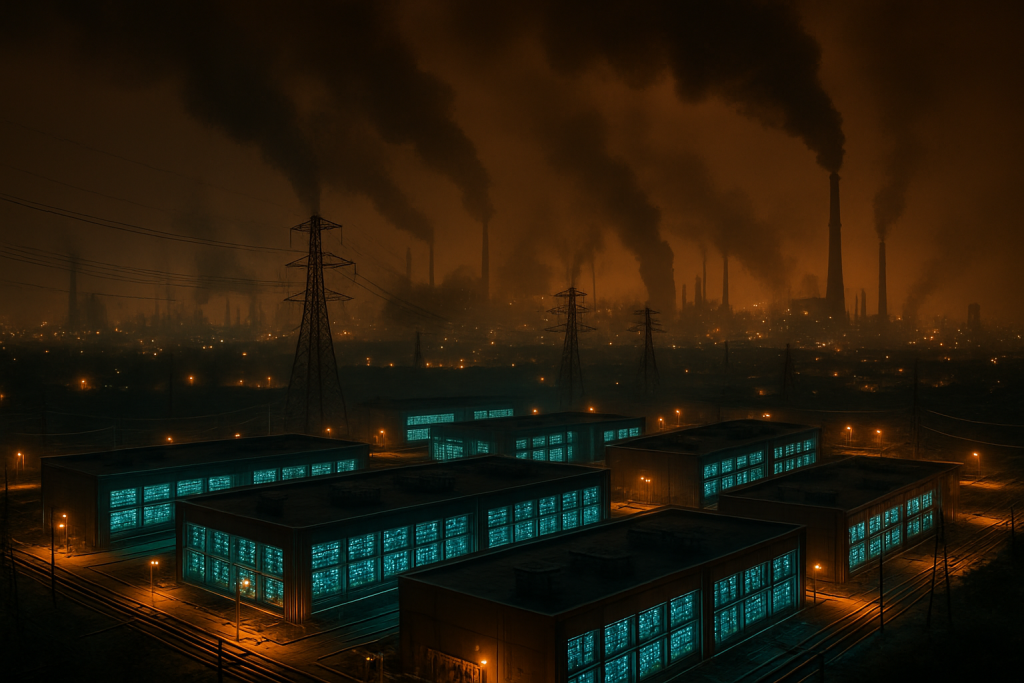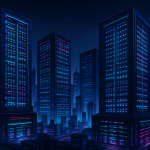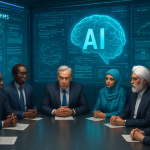Picture this: the year is 2025. Self-driving cars are (mostly) navigating our streets, your fridge is ordering groceries before you run out, and your personal AI assistant is nagging you to finally start that novel. But behind this shimmering curtain of technological progress lies a hidden beast: the insatiable hunger of artificial intelligence for raw, unadulterated energy.
Yesterday, President Donald Trump (yes, still!) unveiled the “AI Action Plan,” a sweeping initiative designed to solidify America’s dominance in the AI arena. The core strategy? Build, build, build data centers. Massive, sprawling digital fortresses humming with servers, the very lifeblood of AI. Think Skynet, but less intent on global domination and more focused on optimizing your targeted ads. Or maybe it’s just a matter of time.
The plan itself isn’t entirely surprising. For years, experts have been sounding the alarm about the escalating energy demands of AI. Every time you ask ChatGPT a question, or your smart speaker plays your favorite song, a data center somewhere is burning electricity. And as AI models get larger and more complex- think GPT-7, or Google’s LaMDA’s even more ambitious successor- their energy appetite grows exponentially. We’re talking Godzilla-level hunger here.
The AI Action Plan proposes a nationwide data center building boom. More servers, more processing power, more AI. But there’s a catch, and it’s a big one: to grease the wheels of this digital gold rush, the plan also calls for easing environmental regulations. Think less red tape, faster approvals, and potentially, a whole lot more pollution. This is where things get…complicated.
The administration argues that these regulatory rollbacks are necessary to compete with countries like China, which are also aggressively investing in AI infrastructure. It’s the classic “jobs vs. environment” dilemma, amplified by the urgency of the AI race. It’s a high-stakes game of digital chess, and the planet might be the pawn.
So, what does this all mean? Let’s break it down.
The Good: AI Supremacy and Economic Growth
On the surface, the AI Action Plan seems like a shot in the arm for the US economy. More data centers mean more jobs- construction workers, IT specialists, engineers. It also means a stronger AI ecosystem, potentially leading to breakthroughs in everything from medicine to manufacturing. Imagine AI-powered drug discovery, personalized education, or self-optimizing supply chains. The possibilities are, frankly, staggering. And if the US leads the way, American companies and workers will reap the financial rewards.
The Bad: Environmental Armageddon (Maybe)
Here’s where the plot thickens, and the environmentalists start sharpening their pitchforks. Data centers are notoriously energy-intensive. Currently, most of that energy comes from fossil fuels. Relaxing environmental regulations, without a corresponding push for renewable energy, could lead to a significant increase in greenhouse gas emissions. We’re talking about potentially undoing years of progress in combating climate change, all in the name of AI. It’s like building a rocket ship to Mars powered by burning rainforests. Cool in theory, catastrophic in practice.
The Tech Industry’s Tightrope Walk
The tech giants- Amazon, Meta, Microsoft, Google- are caught in the middle of this. They desperately need more data centers to fuel their AI ambitions. But they also face increasing pressure from consumers and investors to be environmentally responsible. The solution? Nuclear power, apparently. These companies are making significant investments in nuclear energy sources, touting them as a reliable and low-emission alternative to fossil fuels. It’s a bold move, reminiscent of Tony Stark embracing clean energy in the Iron Man movies. Whether it’s a genuine commitment to sustainability or just clever PR remains to be seen.
The Ripple Effect: Your Electricity Bill
Even if the tech companies manage to power their data centers with clean energy, the increased demand for electricity will likely drive up prices for everyone. As utilities invest in new infrastructure to meet the growing load, those costs will inevitably be passed on to consumers. So, while AI might make your life easier, it could also make your electricity bill a whole lot scarier. It’s a classic case of “there’s no such thing as a free lunch,” even in the age of artificial intelligence.
The Ethical Quandary: Progress at What Cost?
Ultimately, the AI Action Plan raises profound ethical questions about the balance between technological progress and environmental sustainability. Are we willing to sacrifice the planet for the sake of AI dominance? Can we find a way to develop AI responsibly, without exacerbating climate change? These are not easy questions, and they demand a serious and nuanced conversation. We need to think critically about the long-term consequences of our actions, and ensure that the pursuit of AI doesn’t come at the expense of future generations. Because, let’s face it, even the smartest AI can’t fix a planet that’s been pushed past the breaking point.
Discover more from Just Buzz
Subscribe to get the latest posts sent to your email.


